Taking long service leave for the middle school term in 1985 I went on my first trip to Europe.
(A 13-week Melbourne - Bangkok - Hong Kong -Taipei - Japan - Trans Siberian Railway - UK - Athens -
Israel - Egypt - Western Europe - Singapore - Melbourne trip.)
On my Western European tour we crossed into France along the coast from Italy.
We stopped for a look at Monaco and then travelled on to Nice.
Nice
The stony Mediterranean beach at Nice.
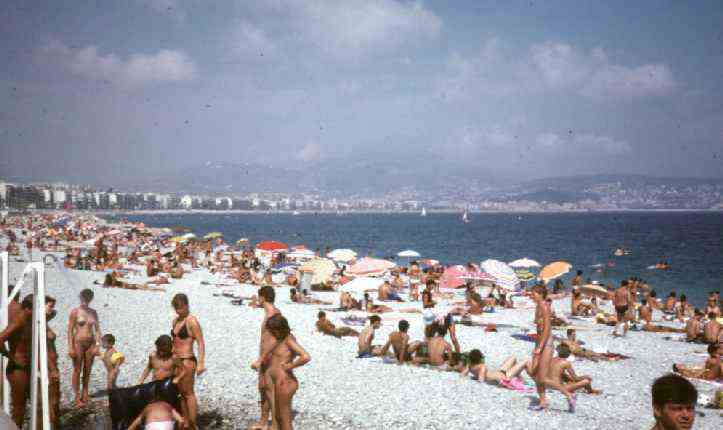
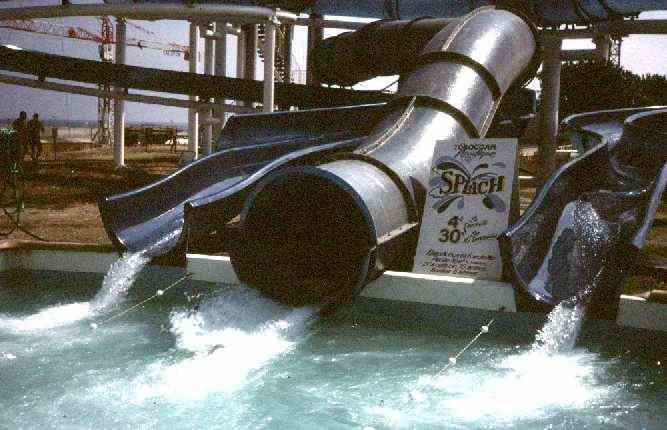
A place to tie up your dog outside a Nice supermarket.
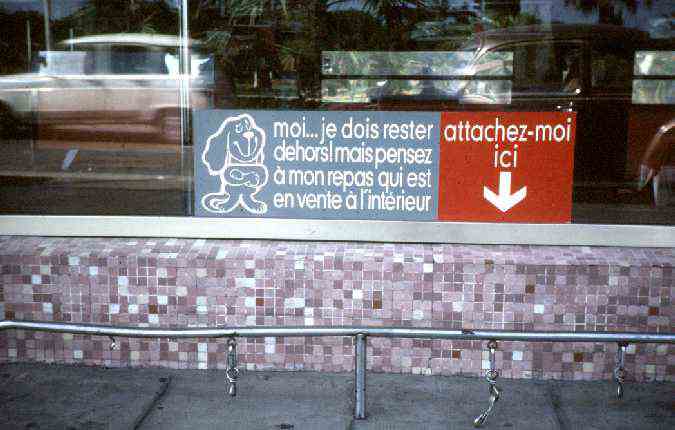
Away from the beach on the French Riveria.
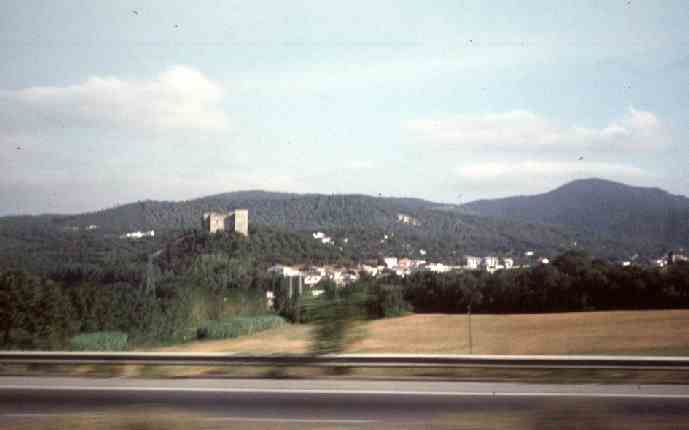
Crossing over the Rhone River near Arles in France heading for Spain.
After 5 days in Spain we crossed the border back into France and travelled on to Bordeaux.
Bordeaux
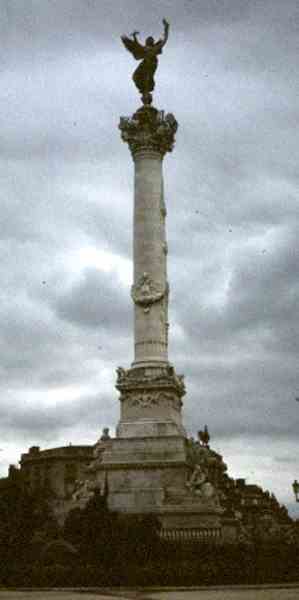
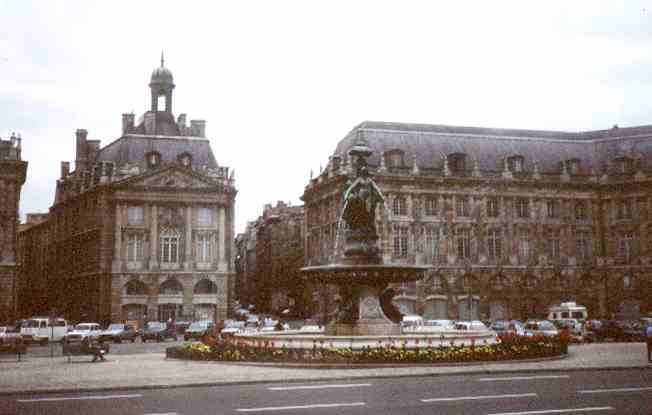
Loire Valley
We stayed overnight at Potiers which is as far north as the Arab invasion of Europe reached.
Amboise Castle
Leonardo da Vinci lived here and is buried here.
From the 15th to the 18th centuries the Loire Valley was the playground of French kings,
princes, dukes and nobles who used family fortunes
and the wealth of the nation to turn it into a vast neighbourhood of lavish chateaux.
The external spiral staircase at Blois Castle.
Sculptures on Chartres Cathedral.
Paris
Notre Dame Cathedral
Notre Dame is one of the most magnificent achievements of Gothic architecture.
Its construction was begun in 1163 and completed around 1345.
The Arc de
Triomphe, Paris’ second most famous
landmark.
This is situated on the world’s largest traffic roundabout
and the meeting point of 12 avenues.
The Arc
de Triomphe was commissioned in 1806 by Napoleon to commemorate his
victories but remained unfinished
when he started losing battles and then entire wars. It was finally
completed in the 1830s.
The 3300 year old Egyptian obelisk in the middle of the Place de la Concorde was given to France in 1829 by the ruler of Egypt, Muhammad Ali.
The base of the Egyptian obelisk which has diagrams showing how it was raised in this square.
Looking from the Place de la Concorde along the Avenue des Champs–E lysees to the Arc de Triomphe.
Louis XVI was guillotined here in 1793 as were another 1343 people over the next two years including his wife, Marie-Antionette.
Madeline church in Paris.
A "poopa scooper" motorcycle to clear Parisian streets of dog droppings.
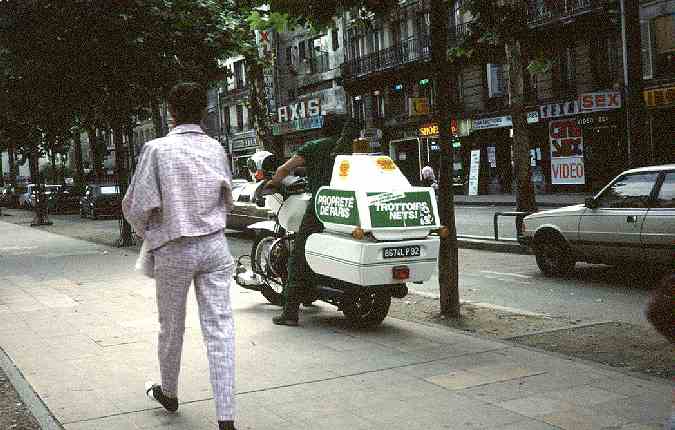
French Gendarmes.
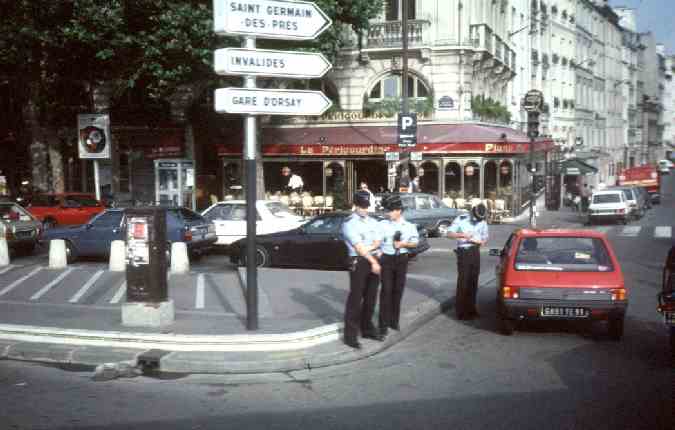
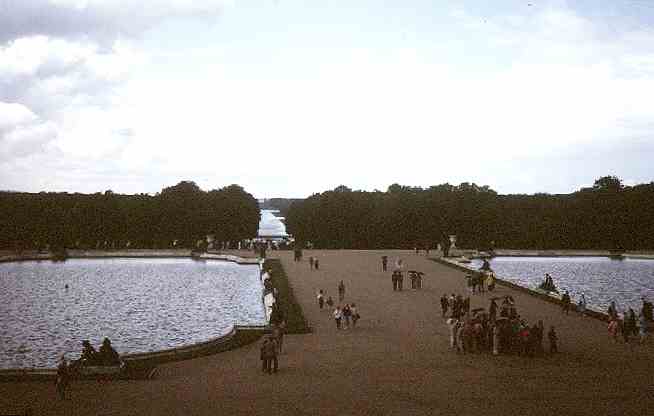
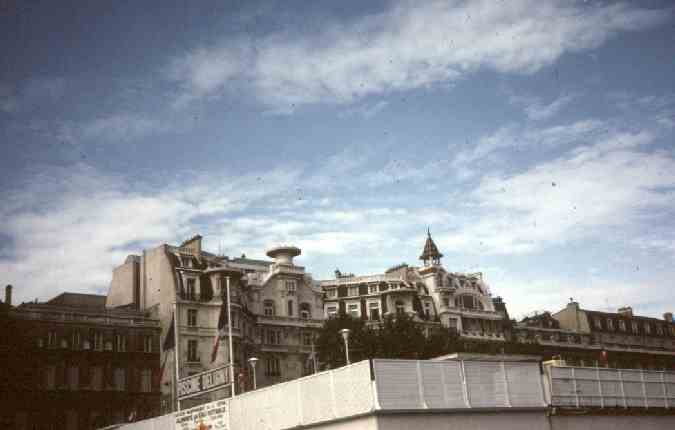
The Eiffel Tower
is the most famous landmark in Paris.
It faced
massive opposition from Paris' artistic and literary elite when it was
built for the 1889 Exposition Universelle (World Fair)
held to commemorate the centenary of the French Revolution.
It is 318 metres high, including the television antenna at the
very top.
This figure can vary by as much as 15cm as the tower's 7000 tonnes of
steel, held together by 2.5 million rivets, expand and contract.
The television antenna at the very top of the Eiffel Tower.
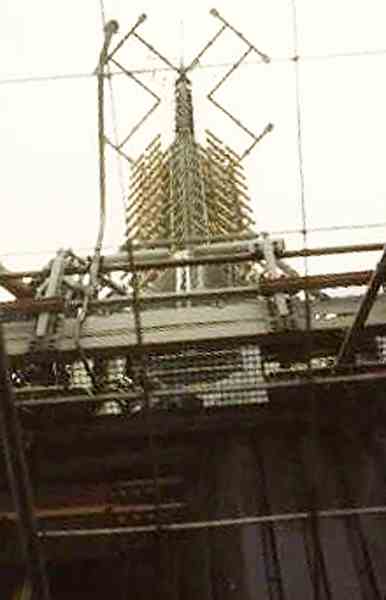
Views from the tower.
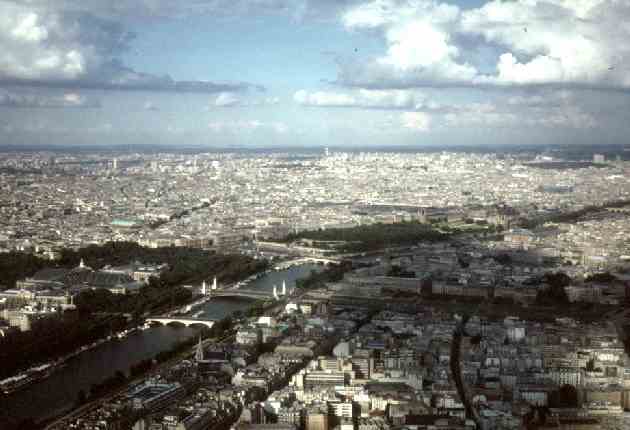
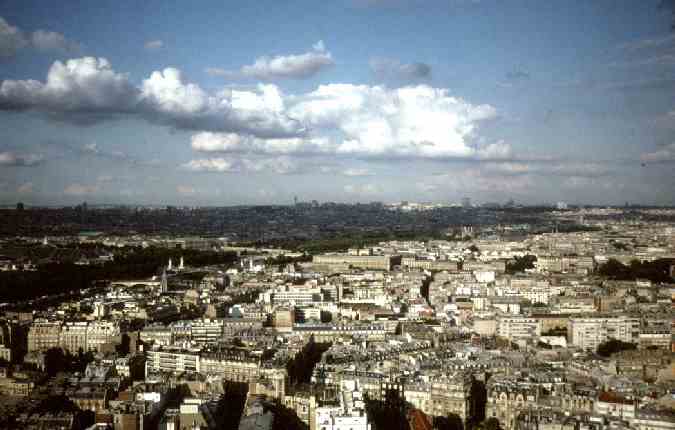
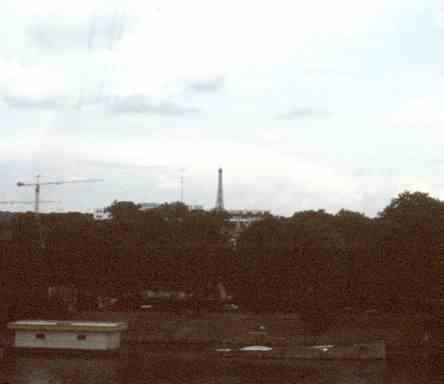
George Pompidou Museum of Modern Art.
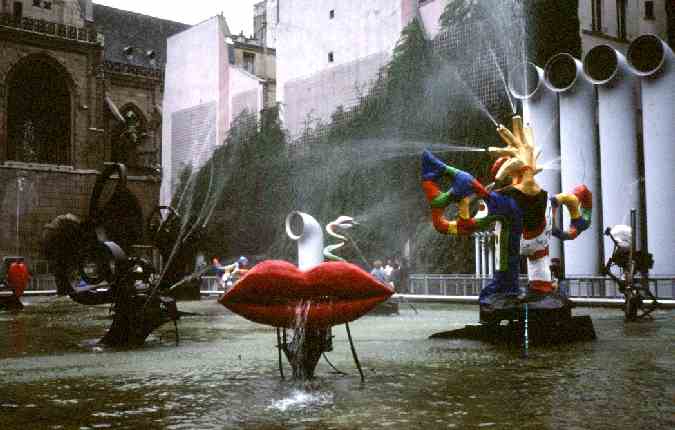
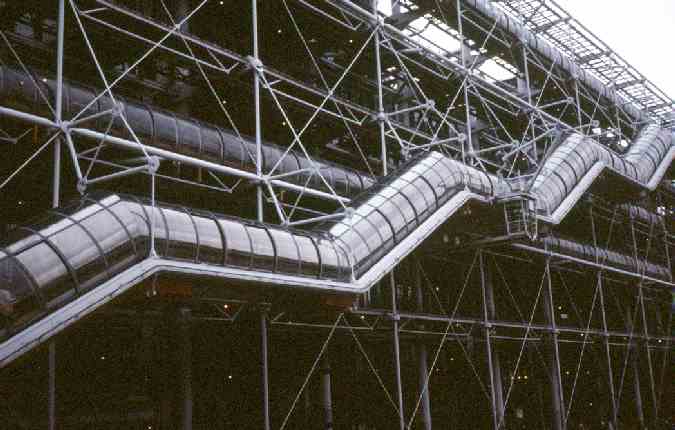
Versailles
Built during the reign of Louis IV (The Sun King), France's grandest and most famous chateau,
Versailles served as the country's political capital and the seat of the royal court from 1862 until 1789.
In 1789 the Revolutionary mobs massacred the palace guards and dragged Louis XVI and Marie-Antoinette off to Paris,
where they were later guillotined.
Among the advantages of Versailles was its 20km distance from the political intrigues of Paris.
Out here at Versailles it was much easier for the king to contain and keep an eye on his scheming nobles.
The plan worked brilliantly, all the more so because court life turned the nobles
into sycophantic courtiers who expended most of their energy vying for royal favour.
Chandeliers in the Galerie des Glaces (Hall of Mirrors) at the Palace of Versailles.
In 1919 the Treaty of Versailles was signed in this room officially ending WWI.
The palace was sparsely furnished and decorated compared to the Russian palaces that we saw.
Much of the furnishings were sold off at the time of the French Revolution.
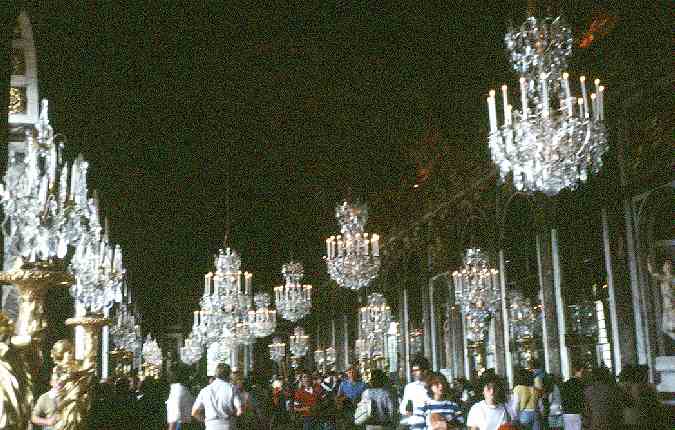
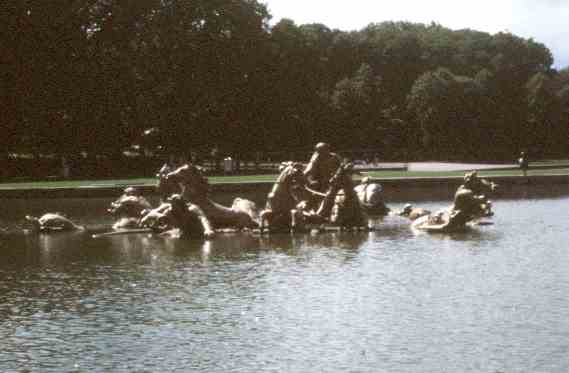
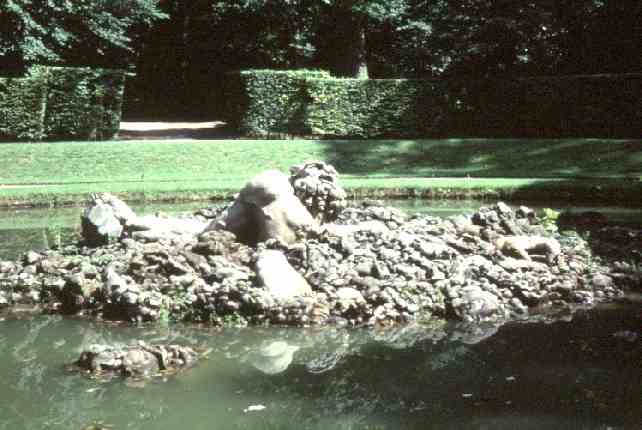
Callais
We left Paris and drove through the WW1 battle countryside (The Somme etc) to Callais
where we caught the ferry Cote d'Azur to Dover.
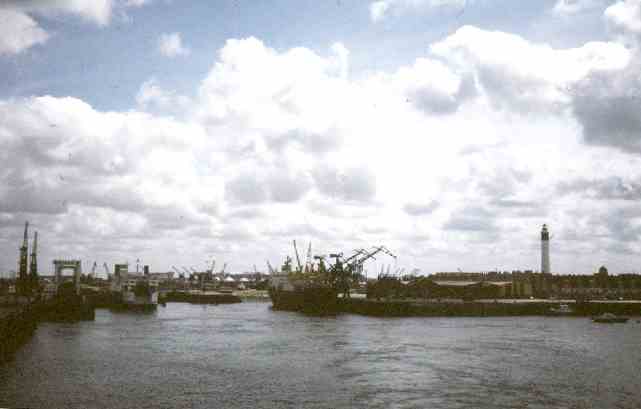
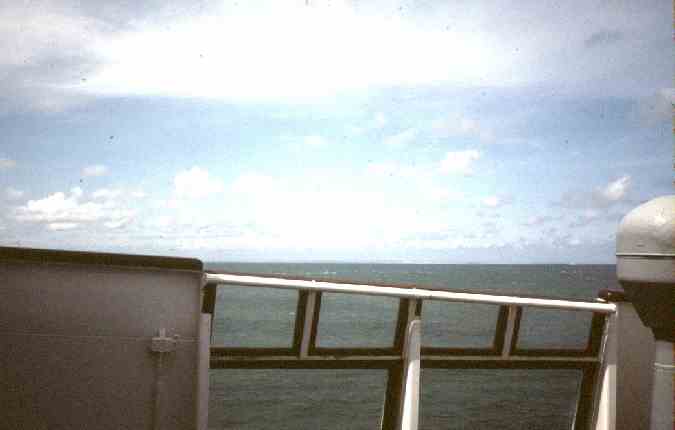
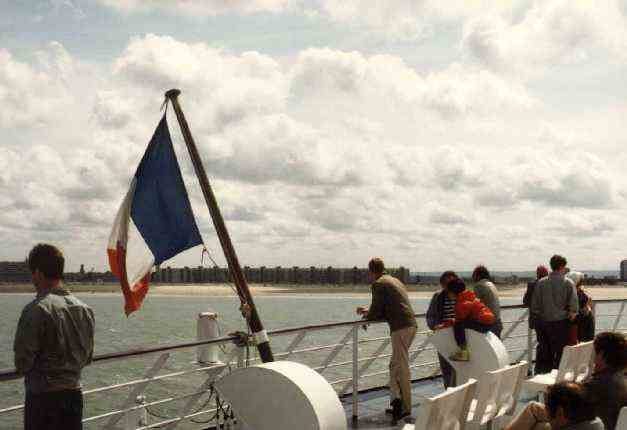
And so on to London, the end of the 32 day Western European tour.